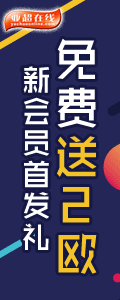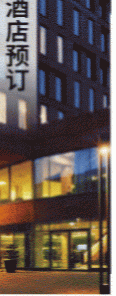|
  
- 积分
- 35112
- 威望
- 4858
- 金钱
- 20
- 阅读权限
- 110
- 性别
- 男
- 来自
- 中国
- 在线时间
- 4434 小时
|

何毓琦:麻省理工与哈佛博士教育之比较 + 年轻人如何写科技文章(En)
On Ph.D Education and Research (4)- MIT vs. Harvard
本文引用地址及中文翻译:http://www.sciencenet.cn/blog/user_content.aspx?id=2768。
I spent almost my entire adult life (9/1950-2/1955, 2/1958-date) in Cambridge, MA and
received my B.S. and M.S. from MIT, and Ph.D from Harvard and taught at the latter
since 1961. The two schools are separated by less than two miles from each other.
Students from each school can take course from the other school and receive credit for
work done in the other school. In science and technology, the two schools have many
cooperative degree programs and colleagues often work together (NOTE: in the medical
science and technology they have a joint Ph.D and M.D. program and its most illustrious
graduate is David Ho, 何大一, the inventor of AIDS cocktail medicine, and foreign
member of the Chinese Academy of Engineering).
However, the two schools follow rather different educational philosophy and tradition
which are worth comparing.
MIT, being much larger in the number of students and courses, strives for guaranteeing
the high average quality of her graduates. You can be sure that a MIT graduate possesses
certain knowledge and skill and the ability to learn on his/her own. In each course, there
was always much home work, examinations and tests. You must do well on them in order
to receive a good grade. I remember when I left MIT for an industrial research job in
industry in 1955, I was well equipped with the latest in electronics and servomechanism
and was ready to tackle problems in those areas. My first boss, also an MIT Ph.D, instead
assigned me to learn all about the then nascent area of digital computers. I did not know
anything about digital computers. But MIT has prepared me well to learn on my own. As
a result, I received three patents on numerical and digital control and wrote my first paper
on the subject. The company actually established a division to commercialize the
inventions in 1958 when I decided to return to school.
Harvard, on the other hand, has a more liberal educational philosophy. While there are
heavy reading assignments, examination and tests are few. Often the entire course grade
is based on one term paper or one final exam. Ph.D qualifying examination are based on
one three hour oral examination as opposed to both extensive written and oral
examinations in the case of MIT (Note: detail regulations for qualifying exams are
determined by individual departments and many vary. I am only talking about general
principles here). Thus, in short, MIT wants to make sure that you KNOW certain things
while Harvard takes a more "lassie faire" attitude. A smart but lazy student can get
through Harvard by taking easy courses, work with not-so-strict advisers, and generally
have a lot of free time to do as s/he pleases. Given my Chinese upbringing and the MIT
training, I first found the Harvard approach rather un-nerving and un-settling. I often
wonder how can a student in this and that area not know such-and-such topic. Sometimes,
I even question how can this student qualify to receive a Ph.D degree from Harvard. But
over the years, I began to change my mind and see the wisdom and necessity of both
approaches to education and excellence. Being a volume producer, MIT has the
responsibility of graduating a large number of qualified students for society. Rigorous
testing and regulations on what students need to know are necessary to guarantee the
standard of her product. Harvard has a much smaller effort can aim differently (Note: the
entire school of applied science and engineering at Harvard is only one third the size of
the electrical engineering department of MIT). Harvard takes a more liberal attitude, does
not attempt to compete with MIT and cover every subject in applied science and
engineering. She encourages her students to range widely and take courses in other
departments, such as economics and philosophy. In a sense, she wants her good students
free to explore on their own and not to take the easiest way out. To put it very roughly,
MIT aims for high average and a narrow variance for her products while Harvard also
aims for a high average but permit more variance in hers. One partial evidence of this can
be seen in the number of Nobel prizes and high tech companies nurtured by Harvard vs.MIT
respectively – both have excellent records but Harvard is ahead in one category while
MIT in the other. By this I do not mean one approach is better than the other. A great country needs both. And there
is no one best educational philosophy but one common endeavor
– to educate you so that you can learn on your own and to be able to pose
problems rather than just solve problems. It is also worth noting both
MIT and Harvard are private institutions which means they are not subject
government regulations on what to teach, how to teach, and whom to teach.
In my earlier days of visiting China, I often complain about the excessive regulation and
quantitative vs qualitative measure in the Chinese educational and research system. But
more lately, I realize that in a developing country, the MIT approach perhaps is more
needed during the transitional phase. Without regulations and strict control, chaos and
abuse can prevail (天下大乱). As she matures and begins to ahere to the world standard
for quality, a combination of the MIT and Harvard approach can be then implemented.
This will also depends on the nature, size, and goal of the school involved (Note:
the range of quality of American higher education covers a wide spectrum ranging
from mail-order $500 ph.d. diploma mill to first rank teaching colleges to top
research public and private universities.).
本文引用地址:http://www.sciencenet.cn/blog/user_content.aspx?id=2768
[ 本帖最后由 wamway 于 2007-8-6 00:23 编辑 ] |
|










